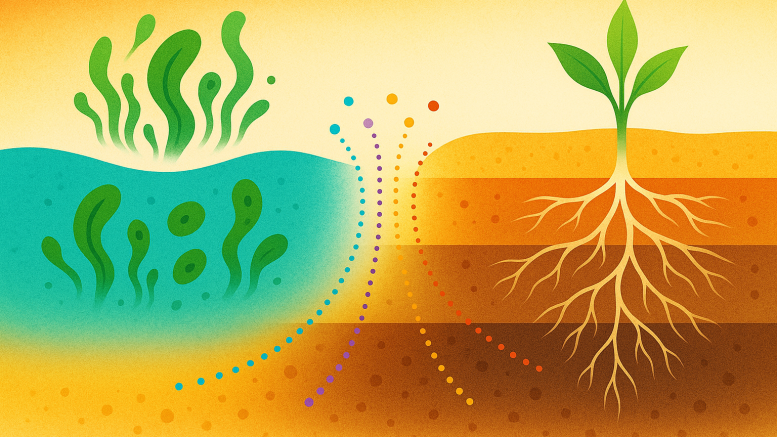“Currently, macroalgae extracts represent the main source of biostimulants…”
Marciel Stadnik, professor and researcher at the Federal University of Santa Catarina, PhD in Agricultural Sciences from the University of Hohenheim, with a M.Sc. in Plant Pathology from UFV and a bachelor’s degree in Agronomy from UFSC.

Marciel Stadnik, professor at UFSC
AgriBrasilis – How important are algae-based bio-inputs?
Marciel Stadnik – The use of algae-based bio-inputs is gaining ground in the global agricultural scene, especially from the perspective of more sustainable and resilient production. Algae contain unique bioactive compounds that can stimulate plant growth, increase resistance to biotic and abiotic stresses, and improve soil quality and nutrient use efficiency. In addition, the use of algal bio-inputs also contributes to environmental health and the competitiveness of agricultural systems. Currently, macroalgae extracts represent the main source of biostimulants, or biofertilizers, as they are known in Brazil, driving the development of an emerging industrial chain.
AgriBrasilis – How much does it cost to produce these products?
Marciel Stadnik – In terms of production costs, the figures vary greatly depending on the scale, the species used, and the technology employed. In controlled microalgae cultures, the initial investment is higher due to the need for infrastructure such as photobioreactors, aeration systems, and light control. On the other hand, the exploitation of marine macroalgae in coastal regions can be more economical, especially when there are public policies to encourage sustainable management. On average, the production of one liter of raw extract can range from a few reais on an industrial scale to higher values on a small experimental scale. However, with technological advances, costs have been falling, making bio-inputs increasingly competitive.
AgriBrasilis – Which species are most commonly used? How are they cultivated or obtained?
Marciel Stadnik – The best-known brown macroalgae are Ascophyllum nodosum and Ecklonia maxima, collected in the North Atlantic and South Africa, respectively, and widely used in the international biofertilizer market. Among microalgae, Chlorella and Spirulina stand out, cultivated in open tanks or photobioreactors, due to their high productivity and rich nutritional value. Macroalgae can be obtained either by harvesting at sea or by cultivation in mariculture systems, a common practice in Asian countries and, more recently, also being developed in Brazil, mainly with the red macroalgae Kappaphycus alvarezii.
“The proposal is not to replace essential macronutrients such as nitrogen, phosphorus, and potassium, but rather to increase the efficiency of their use…“
AgriBrasilis – What are the practical differences between macroalgae and microalgae?
Marciel Stadnik – From a practical point of view, macroalgae and microalgae have important differences. Macroalgae are multicellular organisms, easily visible, with large biomass and rich composition, including sulfated polysaccharides such as alginates, carrageenans, and ulvanes. Microalgae, on the other hand, are unicellular, fast-growing, and have great biochemical diversity, including lipids, proteins, and pigments. This distinction directly reflects their application: macroalgae are traditionally used as liquid biofertilizers applied to the soil or leaves, while microalgae offer opportunities in biofertilizers, biopesticides, and even controlled-release nutrient formulations.
AgriBrasilis – Can algae reduce dependence on conventional mineral fertilizers?
Marciel Stadnik – One strategic aspect is that algae can contribute significantly to reducing dependence on conventional mineral fertilizers. The proposal is not to replace essential macronutrients such as nitrogen, phosphorus, and potassium, but rather to increase the efficiency of their use, minimizing losses due to leaching, favoring root absorption, and stimulating plant physiology. In addition, bioactive compounds present in algae act as inducers of plants’ natural defenses, which can reduce the need for frequent applications of chemical pesticides. In practice, the incorporation of algae-derived bio-inputs into integrated management programs represents a promising path toward agriculture that is less dependent on synthetic inputs and more aligned with the principles of sustainability.
In summary, algae-based biofertilizers represent an innovative frontier in modern agriculture. They combine science, sustainability, and productive efficiency, bringing benefits to both farmers and the environment. The trend is for continued growth in this market, especially in countries seeking to increase their agricultural competitiveness without sacrificing environmental conservation.
READ MORE:


